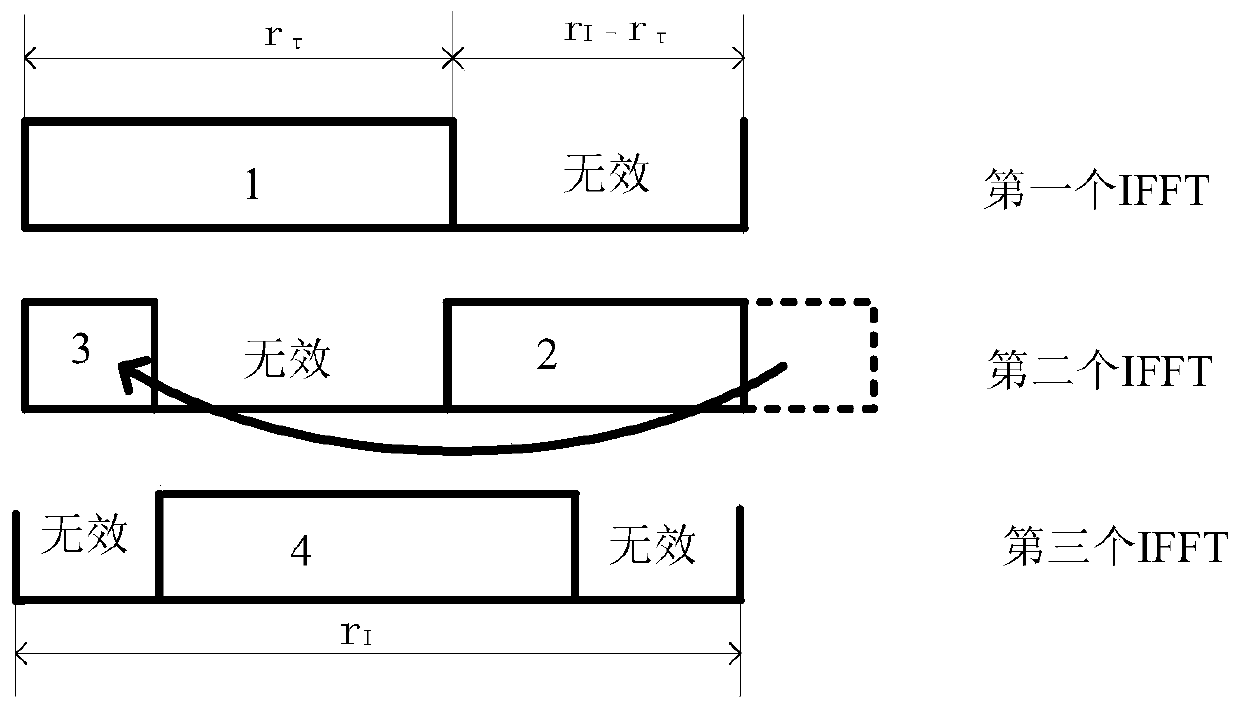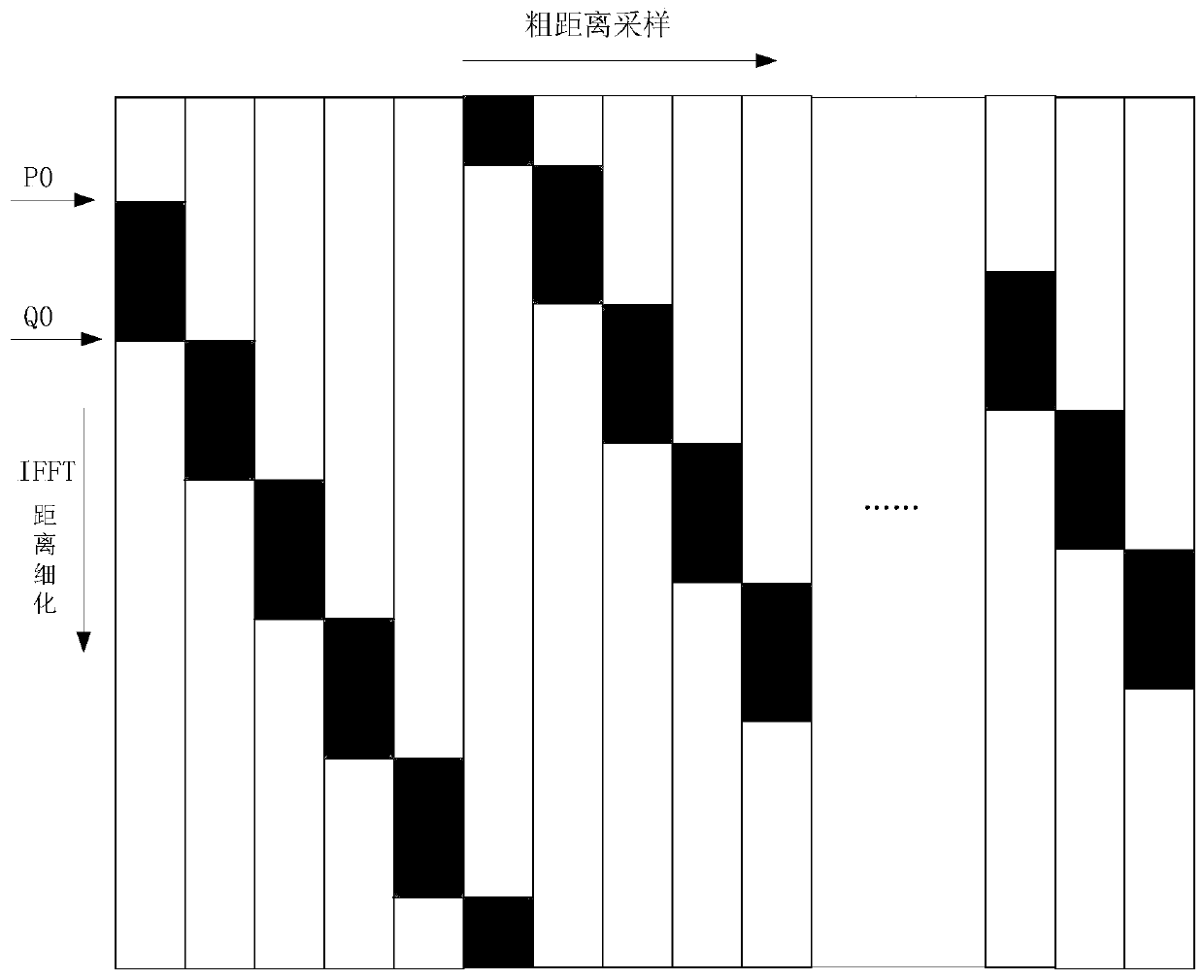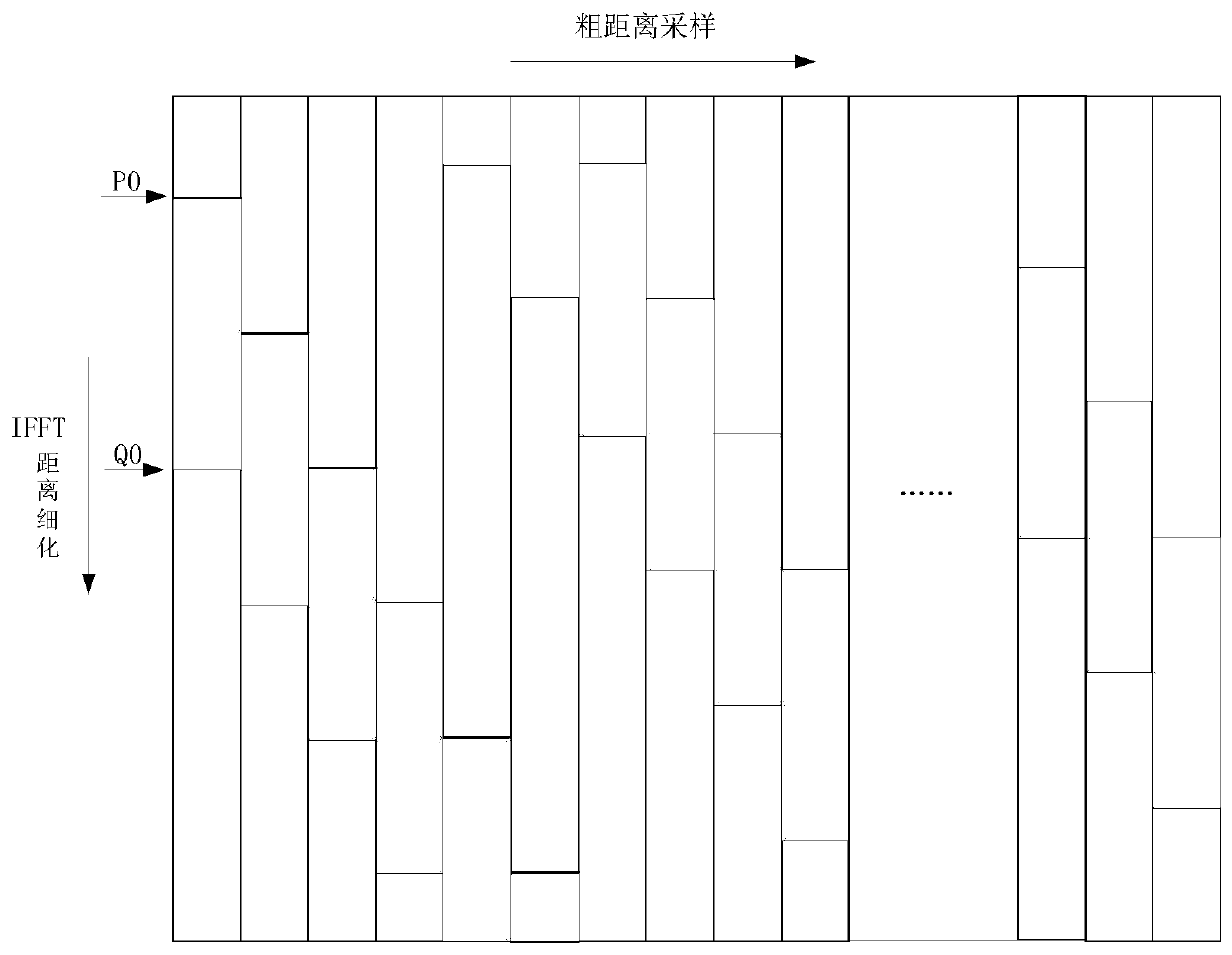Step frequency radar target extraction algorithm based on maximum local energy sum
A technology for step-frequency radar and target extraction, which is applied in the field of signal processing and can solve problems such as unclear physical meaning, false peaks, and large amount of calculation.
- Summary
- Abstract
- Description
- Claims
- Application Information
AI Technical Summary
Problems solved by technology
Method used
Image
Examples
Embodiment Construction
[0059] Now in conjunction with embodiment, accompanying drawing, the present invention will be further described:
[0060] The solution of the present invention to solve the technical problem is: first perform IFFT on the same distance unit points in different pulse repetition periods in one frame of data, take the result after IFFT as the benchmark of the coarse distance sampling point where the target is located, and convert all the coarse distance sampling points The data within is cyclically shifted, so that the same segment of fine sampling distance in each coarse distance sampling point is continuous on the real distance of the target, which is called "alignment" processing in this algorithm. In the coarse-distance sampling point where the target is located, calculate the local energy sum of each point as the starting point, select the range when the local energy sum is the largest as the extraction range, take out a part of the data in the "aligned" matrix, and process t...
PUM
 Login to View More
Login to View More Abstract
Description
Claims
Application Information
 Login to View More
Login to View More - R&D
- Intellectual Property
- Life Sciences
- Materials
- Tech Scout
- Unparalleled Data Quality
- Higher Quality Content
- 60% Fewer Hallucinations
Browse by: Latest US Patents, China's latest patents, Technical Efficacy Thesaurus, Application Domain, Technology Topic, Popular Technical Reports.
© 2025 PatSnap. All rights reserved.Legal|Privacy policy|Modern Slavery Act Transparency Statement|Sitemap|About US| Contact US: help@patsnap.com



